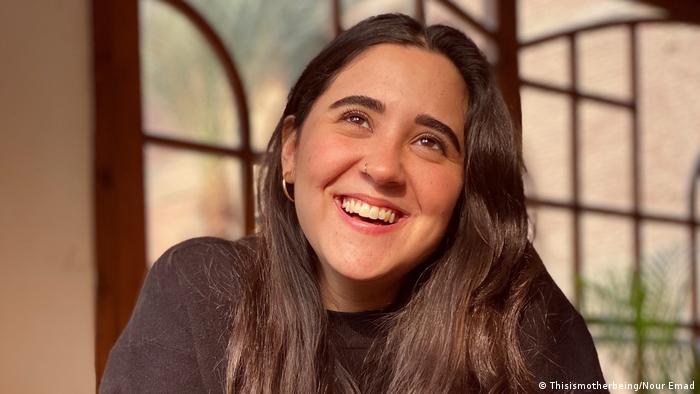Throughout the Middle East, sex education is slowly becoming less of a taboo. On social media, millions are daring to ask everything about "it."

Nour Emad is a trained doula who is soon to launch the first sex education
school in the Middle East
Traditionally, in most Middle Eastern countries, "it" is expected to happen on the wedding night for the first time.
"But for most women, this is also the first time they are naked in front of anyone and the first time they see a penis in real life," Nour Emam, who runs Arab-English sex education courses, told DW.
One doesn't have to be a psychologist to see that this could be more conducive to disaster than to romance and intimacy.
For this reason, one of Emad's online courses is aimed at women who are about to get married. "We kind of walk them through the bodies and genitals and encourage them to talk to their partners before they tie the knot," Emam explained.
She believes it is crucial to address the expectations of both partners. "For years and years, young girls are told that sex is something dirty, so they are scared and possibly not ready for penetration on their wedding night," Emam said. But "on the other hand, many men can't wait to live out all their teenage porn fantasies now that they are finally allowed to have sex."
However, instead of encountering well-staged porn stars, men (mostly) face normal women. "We've heard a lot of stories of men shaming women on the wedding night for the way they look," Emam told DW and explained that "pink vulvas have become some sort of ideal. But I tell the women, how can you expect to be like brown-skinned, but under your belly button, it's pink?"

The Arab-English content is hugely popular on Instagram, TikTok and Facebook
It would seem that Emam's courses and online answers have hit a nerve: In her closed online courses, she has taught around 2,000 women about menstrual health, vaginism or sexually transmitted diseases, and her social media channels have garnered some 1.4 million followers within a year: on Facebook with around 18,000 followers, Instagram with 308,000 followers and TikTok with 1.1 million followers.
Sex education frowned upon
Public sex education has up to now been extremely limited in the majority of Middle Eastern countries.
In Egypt, health professionals and population specialists have opposed comprehensive education about sexuality since the 1990s. They argue that anything containing the word "sexual" should be described in more culturally acceptable terms, like "reproductive health" or "human development."
In addition, many Egyptian families believe to this day that sex education is synonymous with promiscuity and that by providing information to children, educators are teaching them how to indulge in sex before marriage.

Confidence is sexy — a claim by This is Mother Being
One particularly negative aspect of this high level of sexual illiteracy is that sexually transmitted diseases and HIV/AIDS are still taboo subjects, despite rising numbers of these illnesses.
"Egypt's response to the symptoms of a sexually uneducated community has failed miserably," Habiba Abdelaal, fellow of the Tahrir Institute for Middle East Policy and an expert on sexual and gender-based violence in Egypt, told DW.
Safe spaces for sex education
Egypt's Nour Emad is not the only one campaigning for sexual literacy in the Arab world.
Another popular Instagram page is "Niswa" (Arabic for "women"), which was founded by Zainab Alradhi from Saudi Arabia. It has around 60,000 followers.
A pan-Arab women initiative is "Mauj" (Arabic for "waves"), which is run by women from Lebanon, Saudi Arabia and Egypt. This site by and for Arab women with around 65,000 followers focuses on sexual and reproductive wellness.
Another site with Arabic-language content on sexual health and well-being is Love Matters Arabic, which has a following of around 80,000.
Deemah Salem, a gynecologist in Dubai, is also working to educate Arab women about sex. "I've made it a mission to debunk myths about women's health because some can lead to harmful practices," she told the online news outlet Arab News. Her Instagram channel has almost 18,000 followers.
As the first Arab country to do so, Tunisia launched a pilot program on sex education in late 2019. In collaboration with the UN Population Fund and the Arab Institute for Human Rights, public schools there have since included sex education in their curriculums.
"Establishing sex education programs does not require reinventing the wheel," Abdelaal told DW.
However, although she sees and appreciates that there are many successful small-scale private initiatives addressing sexual literacy, she believes a more profound, public approach is needed: "Schools need supportive policies, appropriate content, trained staff and engaged parents and communities to tackle sexual illiteracy."



















